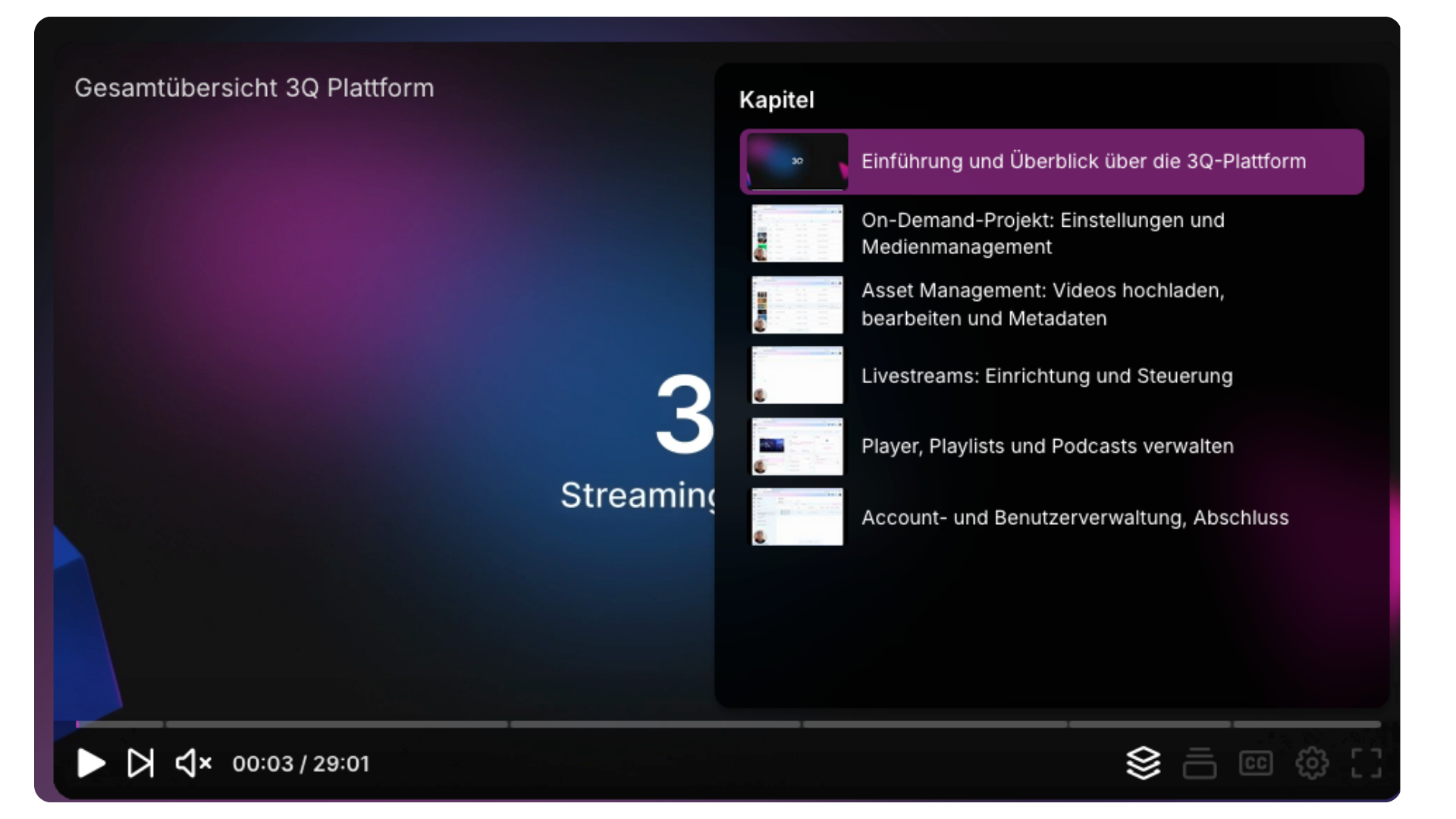Videos in the onboarding process

How to get new employees on board
The quality of onboarding new employees is decisive for the overall experience of new colleagues in the company. It helps them to quickly get an overview of structures, work areas and work processes, but also of the company's vision and culture.
Many companies are increasingly using video onboarding to complement their traditional processes and get new employees on board even faster.
What is an onboarding video?
Onboarding videos are usually used during the onboarding of new employees. They help HR managers, and supervisors make the onboarding process more efficient by using pre-produced videos to convey information that they would otherwise have to deliver in person in meetings or training sessions. And since a lot of information is relevant for every single new employee, this saves a lot of time.
Of course, onboarding videos can't always replace personal training and instructions, but they are a great addition.
Why use videos in the onboarding process?
A company handbook or presentation can formally welcome new employees and provide all essential information in writing. But if the onboarding process involves a lot of documents, it can take some time for a new employee to read and process them. And when employees search for information later, they have to read through various documents again.
With short videos on relevant topics, employees can quickly access the most important information in the digital video library and can process it not only faster but also more easily. In addition, videos can now be automatically subtitled and translated — creating accessibility and easily reaching the international team.
Types of onboarding videos
By building a video-on-demand platform, companies can give their employees quick and easy access to all business-relevant videos. This could be training courses, explanatory videos on how to use work tools, product videos, tutorials, news videos from management and much more.
Onboarding videos are mostly used to increase employee engagement and train new colleagues. Some examples of onboarding videos include:
1. Welcome videos
The first video in the onboarding process can be a welcome message from the company to new employees and from someone like the CEO, the new employee's manager, or team members. A welcome video is also a good opportunity to present the company's values and goals.
2. Knowledge transfer videos
When new positions are filled, the transfer of knowledge is crucial so that new employees are quickly incorporated and can perform their tasks. This type of video can be used, for example, to provide information about processes, products or ongoing projects.
3. Corporate Policy Videos
Every new employee should be familiarized with the basic company rules. Topics such as vacation regulations, occupational safety, travel activities, sick reports, safety precautions, data protection are just a few of the many subject areas that can be covered and are part of the basic information provided by the HR department.
4. Training videos
Training videos are highly effective and can be used in almost any industry. The wide range of applications includes, for example, introduction to new computer programs, security training, sales training, language courses and other professional training courses. Even complex work processes or content can be explained clearly and comprehensibly.
The use of videos that can be viewed many times represents an enormous cost and time saving for a company, because once they have been produced, the videos on demand are available for employees to access at any time and at any time. Every employee can set their own learning pace and, as is well known, content that is learned with images and sound stays in their heads much longer than what is read or listened to.
In contrast to face-to-face seminars, training videos or learning-on-demand videos are an efficient and cost-effective way to train and inform the workforce. Especially in today's video-savvy age, this makes a lot of sense.
Examples of onboarding videos that might inspire you
Dunkin Donuts
In this video for new employees, the company introduces themselves and explains how employees make sure customers enjoy buying donuts. Although this video is intended to be informative and provides brief training before you start the job, it isn't too specific or boring.
Canva
As a design software company, Canva gives its new employees a glimpse into its modern offices and explains Canva's story and the goals it intends to achieve. The special thing about Canva's video is that it allows various members of the team to speak at all levels.
adobe
The video starts with employees personalizing the “I am Adobe” brand, followed by management presenting the company's vision and mission. It is a brief overview of the company and provides a good first insight for new employees.
Zendesk
Through a combination of intelligent, quirky voiceover and an interesting concept, Zendesk tells its new and potential employees almost everything there is to know about working at their company. Thematically, you don't focus on work or company policies — this video for new hires is about what it's like to be a part of Zendesk.
bosch
Promoting employee development is an essential aspect for every company. It ensures that employees can successfully pursue both corporate goals and their individual goals. And that makes a significant contribution to the sustainable development of the entire company.
Innocom Technologies
This short video from Innocom serves as a brief introduction for new employees. In less than two minutes, the video provides new employees with the most important information about the company briefly and concisely and with simple animations.
Animations are particularly useful for simple informational and training videos, as this example shows:
Deichmann
For the production of “glossy” image or recruiting videos, it is recommended to hire a video production company if you do not have internal professional resources for this. For the production of internal presentation videos, explanatory videos or training videos, it is often sufficient to use one of the numerous online providers, which make it easy and quick to create your own videos without previous knowledge and with customizable templates.
Conclusion: Videos play an important role not only in recruiting. Videos are also an effective tool when it comes to onboarding. This allows the company to introduce itself to new employees even before they even set foot on the company premises. This increases the motivation of new employees and contributes to your employer branding.
Videos are also used to share information in the onboarding process. They enable employees to understand and learn things they need for their new job. With the help of videos, they are able to acquire knowledge more quickly without the need for long and time-consuming mentoring. In this way, not only does your company benefit from time savings, but also the new employees.
In this article, you can find out why you should opt for a paid business video hosting platform instead of free platforms, such as YouTube, for your internal corporate videos:
Newsletter
Abonnieren Sie unseren monatlichen Newsletter, um immer auf dem Laufenden zu bleiben!


%202.png)







